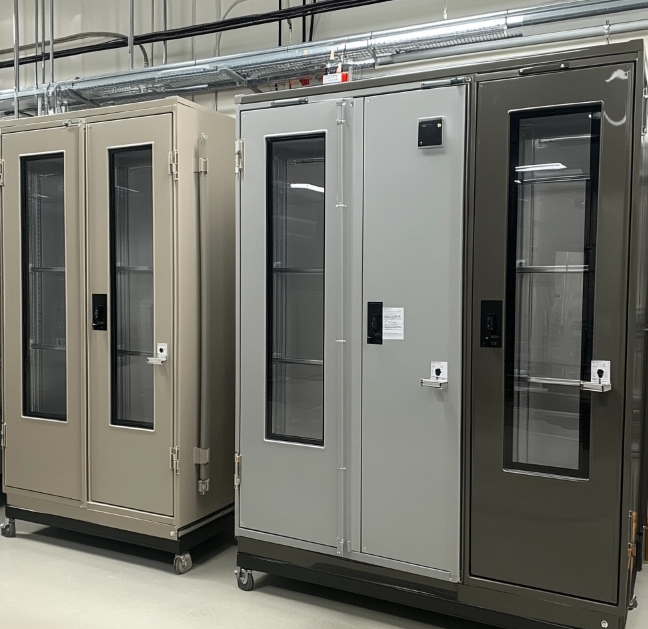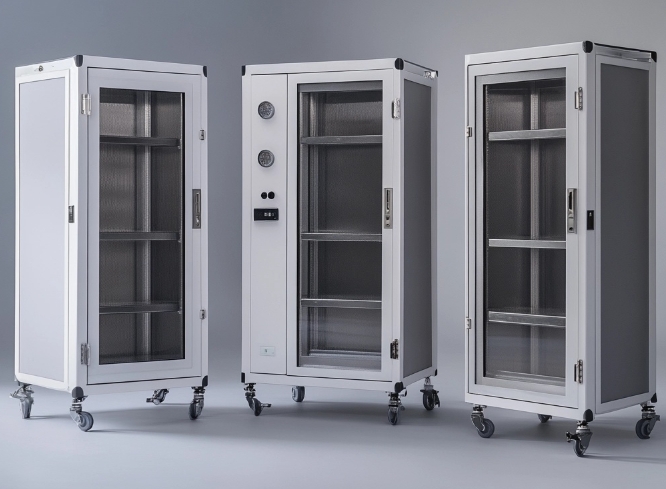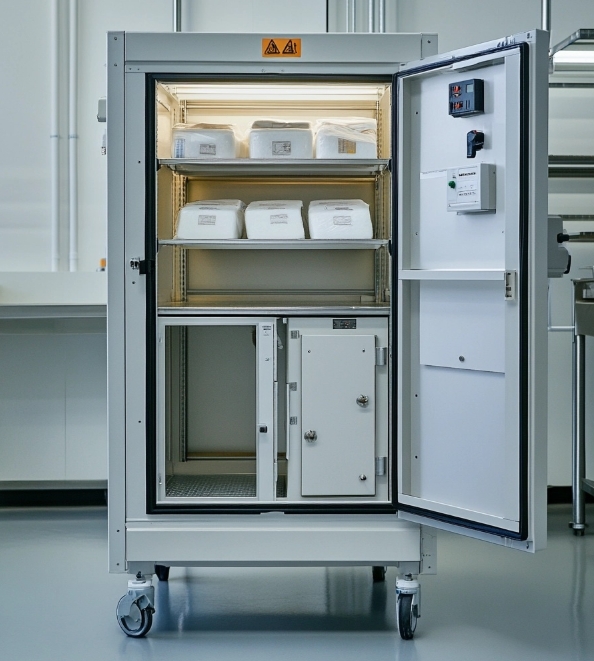 To Know Dryzone More
To Know Dryzone More
A desiccant dry cabinet is a storage unit that is specifically designed to control the humidity levels inside. It utilizes a desiccant material, such as silica gel, to absorb moisture and maintain a low-humidity environment. The cabinet is airtight and features a dehumidifying system that circulates dry air throughout the unit, preventing any moisture from entering. Desiccant dry cabinets are available in various sizes and configurations, ranging from small tabletop units to large walk-in chambers.
When it comes to choosing the right dry cabinet manufacturers, there are several factors you should consider. From the manufacturer's brand to the type of dry cabinet and desiccant storage cabinets they offer, evaluating a potential manufacturer is crucial. In this article, we will guide you through the process of evaluating and choosing the right dry cabinet manufacturers.

Before you begin your search for the right dry cabinet manufacturers, you need to conduct an in-depth comparative analysis of all viable manufacturers. This analysis should include researching the manufacturer's brand, the type of dry cabinet they offer, their experience, and reputation in the industry. Additionally, review the reviews and testimonials left by prior customers to gauge their satisfaction levels.
The first factor to consider when evaluating and choosing a manufacturer is their brand. You want to ensure that the manufacturer has established themselves in the marketplace and has a good reputation. Consider longevity and sustainability as well since a manufacturer with longevity will have a proven track record and will be there to serve you over the long-term.
The type of dry cabinet the manufacturer offers is the second factor you should consider. Different manufacturers offer different types of dry cabinets based on their specific needs and requirements. For example, some offer the desiccant dry cabinet, while others offer nitrogen cabinets or hybrid cabinets. So, it's important to know your specific needs and requirements to consider the type of dry cabinet that best suits your demands.
Desiccant storage cabinets are also a vital consideration when choosing the right manufacturer. Desiccant storage cabinets are typically used to keep your desiccants dry and free from contaminants. So, it's essential to consider how the manufacturer stores their desiccants - this can include the material and the storage capacity.

Desiccant dry cabinet is a popular choice for organizations that need to store sensitive equipment and materials in a dry environment. However, over time, the desiccants in the cabinet can become saturated and lose their effectiveness. Here's how to identify and replace used desiccants in desiccant dry cabinet:
Check the Relative Humidity (RH) readings in the cabinet. This will help you determine if the desiccants are working effectively.
Inspect the color of the desiccant. If they are pink, this indicates that they have reached the point of saturation and need to be replaced.
So, when you identify that your desiccants need to be replaced, carefully remove the old desiccants and discard them safely.
Then, replace the used desiccants with new ones.
Desiccant dry cabinet and desiccant storage cabinets need to be kept in an environment with consistent temperature and humidity levels to perform optimally. Factors that can affect the performance of desiccant dry cabinet and storage cabinets include:
Temperature Fluctuations: High fluctuations in temperature can cause condensation buildup, jeopardizing the dry cabinet's performance and compromising the equipment's efficacy.
Humidity changes: Humidity changes in the environment can affect the efficacy of desiccants and make them less effective over time.
Airflow: Insufficient airflow can cause moisture to collect on the cabinet's surfaces, which can lead to bacterial growth.
It's essential to ensure your dry cabinets and desiccant storage cabinets are kept in the ideal ambient conditions to optimize their performance and longevity.

Desiccant dry cabinet has several advantages over other types of humidity-controlled storage units, such as refrigerators, humidity-controlled storage cabinets, and others. Here are some of the benefits of using the desiccant dry cabinet:
Unlike refrigerators and other cooling-based storage units, desiccant dry cabinet does not require a specific temperature range for proper operation. This makes them more versatile and cost-effective, as they can be used in various environments without the need for temperature regulation.
Desiccant dry cabinets are more cost-effective than refrigerators and other cooling-based storage units. They consume less energy and have fewer moving parts, which reduces maintenance costs and increases the lifespan of the unit.
Refrigerators and other cooling-based storage units can create condensation inside the cabinet, which can cause damage to moisture-sensitive items. Desiccant dry cabinet does not have this issue, as they do not lower the temperature to remove moisture from the air.
Desiccant dry cabinets come in various sizes and configurations, allowing for custom storage options that cater to specific needs. This makes them more flexible than other humidity-controlled storage units, which may have limited capacity or configuration options.
Evaluating the right dry cabinet manufacturers for your organizational needs is a significant step in protecting your sensitive equipment and materials. A proper comparative analysis of viable manufacturers, consideration of the type of dry cabinet offered, desiccant storage capacity available, and their brand reputation is essential. Additionally, understanding how to identify and replace used desiccants in desiccant dry cabinet is practical. Finally, the environmental factors that affect dry cabinet performance and desiccant storage cabinet performance are important to consider to optimize the equipment's longevity, safety, and efficacy.